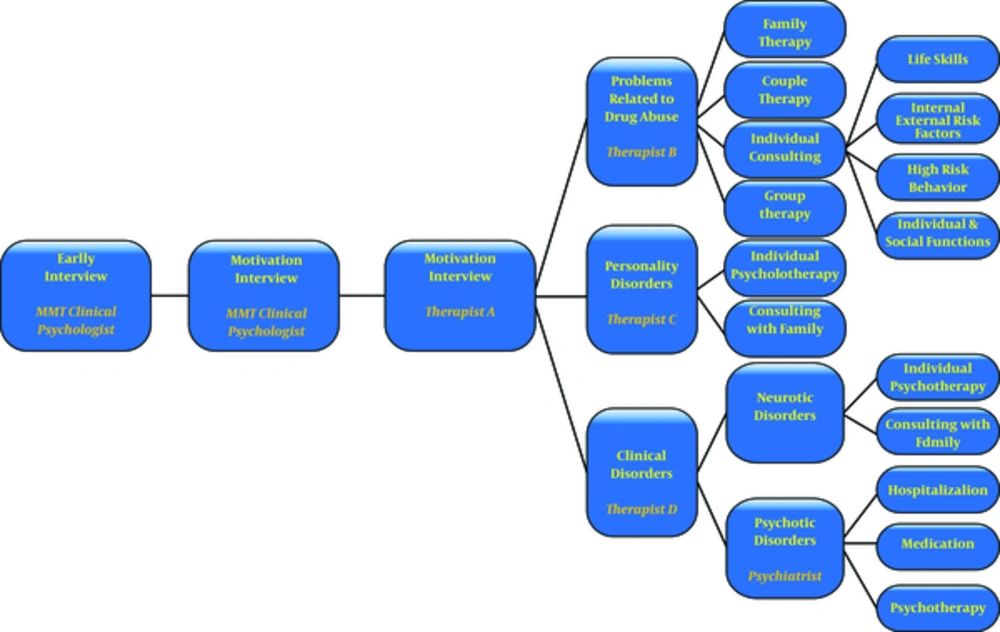Dear Editor,
During recent years, methadone/buprenorphine maintenance therapy (MMT/BMT) has been one of the effective methods in controlling substance abuse and risky behaviors in Iran (1, 2). However, one of the major challenges of this therapeutic approach is treatment retention rate (3). Obviously, there are weaknesses in the routine work of these centers that increase the likelihood of treatment failure (4). For example, at least 50 patients are undergoing methadone therapy in Grade 4 clinics and some patients are under treatment with buprenorphine and opium tincture. However, in each of MMT/BMT clinics, only one psychologist is active who usually does not have enough experience. Additionally, according to the working hours of the clinics, the psychologist does not have enough time to provide exclusive psychotherapy. On the other hand, today in developed countries, the emphasis is placed on specialization in implement interventions. Specialization or specialized interventions mean that each part of the treatment is processed to be performed by a qualified and experienced professional. As a result, the multi-component psychiatric profile of patients treated in centers has required implementing the specialized interventions by an experienced psychotherapy team (5). Thus, it seems that specialized interventions must be performed by a number of clinical psychologists and psychiatrists because the patients can benefit from the specialized and extensive services of the psychotherapy team.
Given these considerations, the formation of a number of addiction psychotherapy cores in every city with the participation of various experts can be fruitful. So that in each metropolitan area that covers a number of MMT/BMT clinics, an addiction psychotherapy core can be formed. Then, expert psychologists in the field of individual psychotherapy, couples and family therapy, and treatment of personality and clinical disorders can be placed in each of these cores (5). Also, a psychiatrist can join this group for the diagnosis of psychosis and drug therapy which would be beneficial (5). It seems that through this method, MMT/BMT centers’ psychologists can focused solely on the initial interview, motivational interview, and supportive psychotherapy which may create better efficiency (4). Moreover, referral of the patients to the addiction psychotherapy core, giving diagnostic interviews, and receiving appropriate and timely treatment can prevent the wandering of the patients and their family members (6). This procedure reduces the likelihood of dropping out of treatment and re drug abuse (3). Therefore, we recommend the formation of addiction psychotherapy cores that simultaneously cover a number of MMT/BMT clinics. Our suggestive model is shown in Figure 1.
